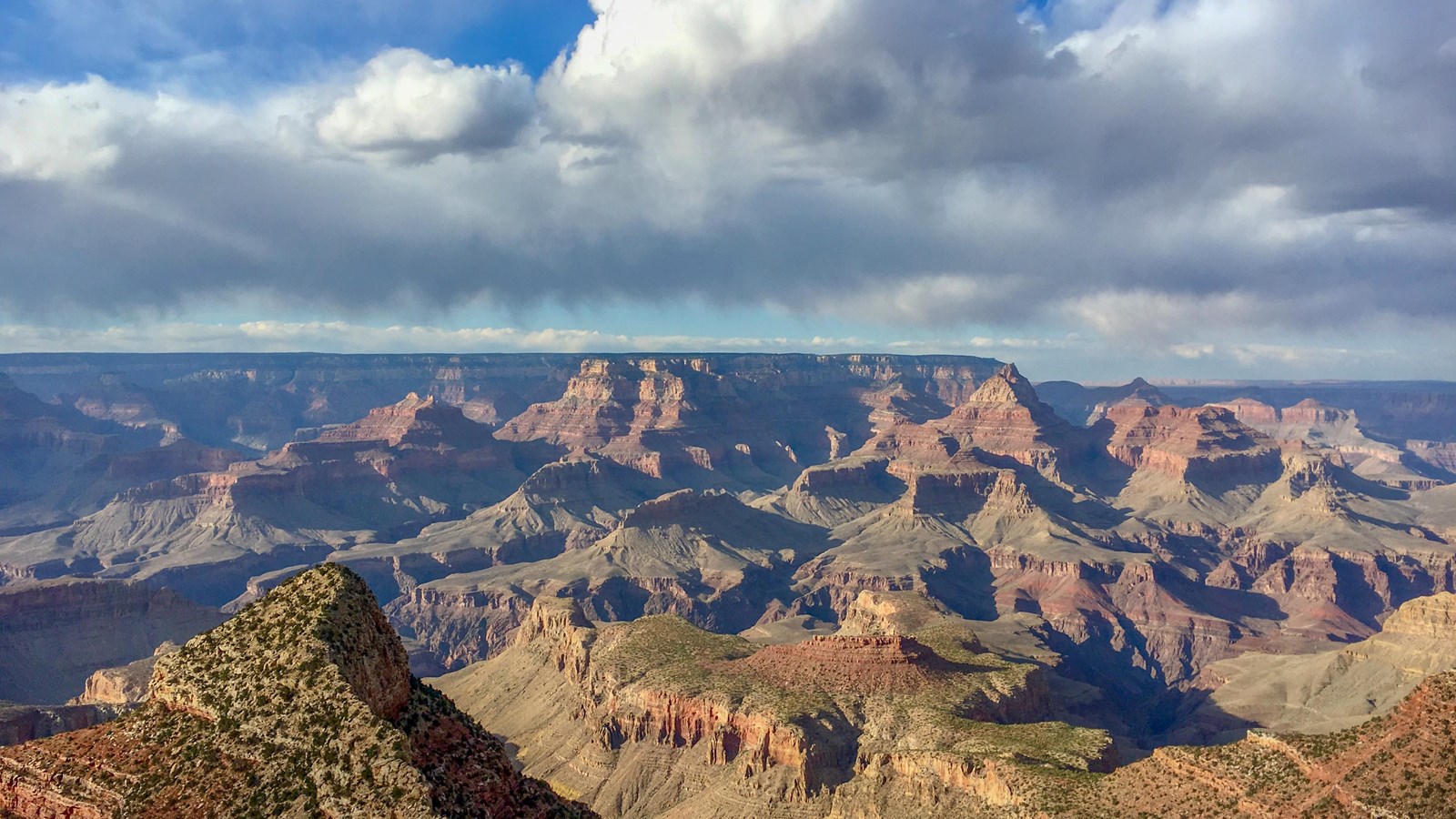Last updated: October 10, 2024
Place
Grandview Point

NPS/M. Quinn
Historical/Interpretive Information/Exhibits, Parking - Auto, Parking - Bus/RV, Picnic Table, Scenic View/Photo Spot, Toilet - Vault/Composting, Trailhead, Trash Dumpster, Trash/Litter Receptacles, Wheelchair Accessible
Grandview Point is one of the most popular South Rim viewpoints in the park. It is located along Desert View Drive (SR 64), halfway between Grand Canyon Village (10.2 miles/16.4 K) and Desert View (13.8 miles/22.2 K). The viewpoint offers breathtaking panoramic views of the canyon and is known for stunning sunrises and sunsets.
Key Features:
Elevation: Grandview Point is approximately 7,400 feet (2,250 meters) above sea level, making it one of the highest points along the South Rim. From Grandview Point, travelers can see vast expanses of the canyon, including the Colorado River and the layers of colorful rock strata that reveal the geological history of the area.
Visitor Facilities:
At the overlook, there are parking areas and vault toilets available. Drinking water is not available.
Safety Considerations:
Due to its elevation and the rugged terrain, visitors should wear appropriate footwear and be cautious near the canyon’s edge.
Historic Trail:
The Grandview Trail starts here at the scenic overlook and plunges steeply into the canyon. Originally constructed in the late 1800s, this trail served mining operations, enabling the transport of copper ore using burros and mules.
Today the trail is popular with hikers looking for a more rugged experience. Trail Difficulty: Hard/Strenous.
During summer, much of the trail is in full sun. In winter, ice and snow make hiking treacherous. Always use caution on the Grandview Trail and consult a park ranger at one of the visitor centers or the Backcountry Information Center for the latest weather and trail conditions.
